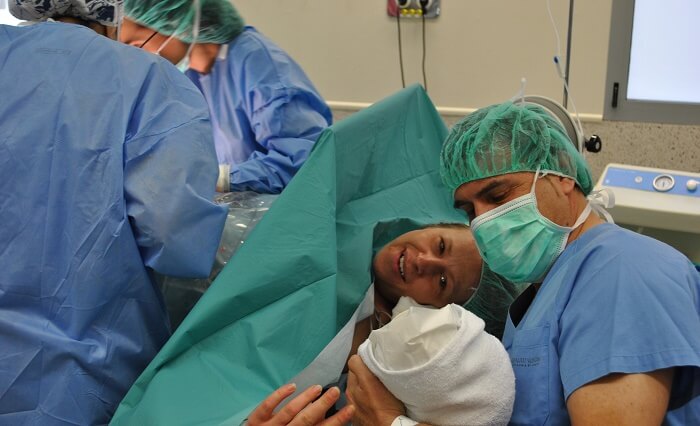What Causes Rapid Labor?

For most women there will be a considerable wait between each stage of labor and delivery. However, some women go into rapid labor, and give birth much sooner than expected.
Every pregnancy is different, and so is every birth. Nature plays by its own rules. Although rapid labor is completely natural, it can have certain disadvantages.
The process of birth takes place in three parts: active labor, birth and delivery of the placenta. Each of these stages can take more or less time, but in general, women will take between 6 and 18 hours to give birth.
When rapid labor occurs, however, all three phases take place within around five hours. As the name suggests, this is a process that happens fairly quickly.
In many cases, this is ideal, but it can also lead to difficulties. In this article, we will explain how rapid labor occurs and what the complications may be.
Signs of rapid labor

For a woman to go into rapid labor, a set of specific conditions must exist. For example, the uterus must be efficient enough to produce strong contractions.
The baby is often smaller than average. This means that rapid labor can’t occur in every pregnancy.
Every contraction brings me closer to my baby
–Unknown author–
There are certain signs to determine whether labor is progressing rapidly or not. Labor may begin rapidly, but may not necessarily end that way.
The signs of rapid labor are:
- Intense contractions from the start. The time between each contraction is very short, to the point where there is no time for the mother to recover in between.
- Continuous pain that feels like one long contraction and doesn’t subside.
- Sensation of pressure and pushing without any warning. This is because the baby begins pushing to come out. This may feel like a bowel movement.
- These symptoms may not always be in time with the dilation or effacement of the cervix.
Complications associated with rapid labor
Experts believe that women who have already gone through a birth that has progressed rapidly are more likely to do so again. That is, one of the main factors in rapid labor is a mother who has already had a quick birth.
Other conditions associated with rapid labor include a uterus that produces efficient contractions.

Given that it isn’t possible to predict rapid labor until it’s happening, the main difficulty can be the emotional stress involved.
Women who are giving birth can lose control of the situation, particularly if it’s the first time. It can also be difficult for healthcare staff to manage the birth.
As we’ve said, every stage of the process of birth takes time. In general, progress is gradual. This allows doctors to apply strategies to combat any possible complications.
In this sense, both the mother and the doctors can have problems managing the situation when labor goes ahead very quickly.
Another obvious complication may be the time and place at which this process occurs.
The mom-to-be may realize that, given how rapidly labor is progressing, there is no time to get to the hospital or birth center.
This may mean that she needs to give birth right where she is, without the help of a doctor or the right medication.
In addition to the issues mentioned above, the following complications may also occur:
- Higher risk of a tear or laceration in the birth canal or cervix
- Giving birth somewhere that isn’t sterile
- The baby may be at risk of infection, depending on where the birth occurs
- Possibility of vaginal or uterine hemorrhage
- Dropping the baby
- Perinatal asphyxia
- Risk of aspiration of amniotic fluid
- Craneal trauma in the baby
- Extended period of postpartum recovery due to the shock of rapid labor
This text is provided for informational purposes only and does not replace consultation with a professional. If in doubt, consult your specialist.








